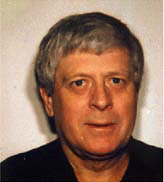ORLANDO, FL-Even though tonsillectomies are a commonly performed procedure, research continues to find out more about how to best do the surgery, as well as other values of the procedure. At the recent annual Combined Otolaryngology Spring Meeting, attendees heard a comparison of different techniques for performing them, as well as a description of a novel combined tonsillectomy and sphincter pharyngoplasty procedure for treating patients with velopharyngeal insufficiency.
Explore This Issue
July 2008Augustine L. Moscatello, MD, Associate Professor of Otolaryngology at Westchester Medical Center in New York, described the various approaches surgeons use on tonsillectomies. There are about 263,000 tonsillectomies performed in the United States each year, making it one of the leading pediatric surgical procedures in the country. The preference for which procedure should be used has changed over the past 30 years. In the 1980s, electrocautery coagulation-dissection gained favor and is now probably the most commonly used approach. It is associated with less bleeding, but patients have more postoperative pain, he said.
Coblator and microdebrider techniques have also gained popularity. Both techniques remove about 90% of the tonsillar tissue, while leaving a thin rim laterally-this avoids disruption of the tonsillar capsule, he said. Coblation works by dissociating isotonic saline between the electrodes of the coblator. It breaks the bonds between cells, and reaches a temperature of between 45°C and 85°C. A microdebrider works by shaving tonsillar tissue from the inferior medial pole-proceeding superior laterally. It preserves the tonsillar capsule along with a thin rim.
Which Technique Is Best?
But are any of these commonly used techniques superior? A prospective, double-blind study was launched to help answer that question. It compared the three techniques and their surgical parameters, efficacy, and morbidity in a series of pediatric patients with obstructive sleep apnea (OSA).
A total of 156 patients, aged six months to 22 years, were entered into the study. Exclusions from the study included craniofacial dysmorphism, cerebral palsy, asymmetrical tonsillar hypertrophy, and other complicating conditions. The surgery was performed by one of two surgeons for uniformity in the procedures.
Patients were placed into one of three treatment groups. A total of 53 patients were treated with extracapsular electrocautery (a Teflon-coated spatula [Bovie] with a coagulation setting of 10W); 53 underwent coblation (an EVAC-70 handpiece [ENTec] probe with a standard setting of ablation at 7, and coagulation set to 3). Another 53 patients were treated with a Zomed or Gyrus microdebrider set at 1500 RPM was used.

Leave a Reply